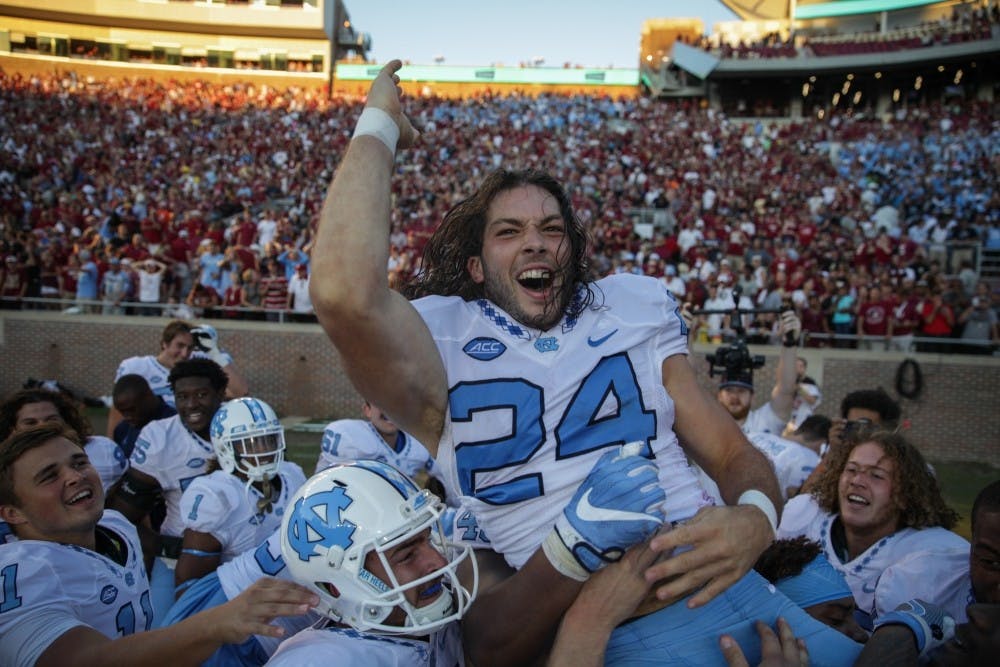Larry Fedora walked out of Doak Campbell Stadium a conquering hero on Oct. 1, 2016.
The trespassing North Carolina fans, who wanted to bask in the history they had just witnessed and thank the team that gave them that moment, formed a human tunnel starting near UNC’s locker room to the team bus door. Those same supporters dished out high fives and did their own Nick Weiler tomahawk-chop impressions when they couldn’t reach a player’s back to pat.
Weiler’s 54-yard boot as time expired had not only immortalized the senior kicker’s spot in North Carolina football lore: It gave the Tar Heel head coach his most iconic win of his mostly up-and-down career. It gave North Carolina one of its most unlikely road wins of all-time. And, for a moment, it seemed to have tattooed the UNC emblem into the college football conversation forever.
Compare the weekends of the 2016 and 2017 football seasons and see black and white.
The game in 2016 spawned hope for the rest of North Carolina’s season. The Tar Heels may have dropped their first game against Georgia, but they’d proven that they can win close games on the road and at home. ACC title hopes lingered — the same ones that hung around until an offsides call hindered them in 2015, and the same ones that seemed unfathomable just a year before that.
The game in 2017, though, was the opposite. North Carolina’s 33-7 loss to an unranked Georgia Tech team confirmed that the 2017 Tar Heels weren’t a floor below the team two years ago — they weren’t even in the same building.
Saturday’s game marked only the third time a Larry Fedora Tar Heel team hadn’t scored double-digit points. It also was the third-least productive offensive performance for UNC since Fedora took over, as the Tar Heels only mustered 247 yards of total offense. North Carolina punted six times, threw two more interceptions than touchdowns and lost the possession battle by nearly 17 minutes.
Diving deeper, the Yellow Jackets exposed all of the Tar Heels' biggest issues. Starting quarterback Chazz Surratt threw for only 141 yards on 30 pass attempts, and a combination of his indecisiveness in the pocket and his patchwork offensive line breaking at the seams led to two sacks. The redshirt first-year tossed his second interception of his career at the ultimate turning point in the game — immediately after a Tar Heel fumble recovery, and right before Georgia Tech running back KirVonte Benson’s 63-yard touchdown run that broke the game open 17-0.
Surratt’s job at starting quarterback seems to be secure — but its not because of his superior play. Graduate transfer Brandon Harris, who took just two snaps all afternoon, threw an interception on his only pass attempt of the outing.




